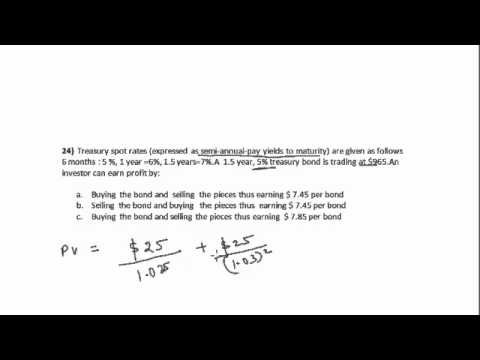A Better Mousetrap for Income Bond Ladders Part 2
Post on: 21 Апрель, 2015 No Comment

Bonds are not the stodgy, boring things that most investors think of even though theres no army of talking heads on financial news shows talking about them.
They are a huge market (about double the value of stocks as noted in my last post). They are an essential part of our economy. Most companies cannot function without easy access to credit. In fact, the shock and uncertainty that followed the collapse of some of the largest banks pretty much brought the economy to a standstill and contributed mightily to the Great Recession.
But that doesnt mean that there isnt money to be made in this asset class. Savvy investors of all stripes need to consider the value of bonds in a well-diversified portfolio. And how you build that portfolio will help lower risks and costs and ultimately mean more money in an investors personal bottom line.
Whether someone is retired or not, bonds can provide income and potential capital appreciation (and depreciation if not hedged properly).
Bonds are a key part of an income-producing strategy (dividend-paying stocks are another asset class useful for this as well).
What is a Bond Ladder?
Essentially, a bond ladder describes a strategy to manage fixed-income investments by staggering the maturity dates of the various investments.
Some may be familiar with CD ladders: You select a series of bank certificates of deposit and stagger their maturity dates so that every six months, for example, a CD matures and you can reinvest the proceeds.
The advantage of this is that in a rising interest rate environment the investor is not locked out of getting a higher rate on new money.
As with any fixed income investment, the disadvantage is that in a falling rate environment money that matures gets reinvested at a lower rate.
To minimize this impact professionals focus on the concept of “duration” which is a measure of how sensitive a bond (or any fixed income investment) is to changes in interest rates: The lower the duration, the less sensitive and vice versa.
Mutual funds may publish an implied “duration” measure but it is not accurate because the fund, unlike the bonds themselves, is perpetual.
So to minimize risk to a fixed income portfolio, an investor (with the help of a competent financial professional) can create a custom portfolio. And unlike a passive index fund, this custom portfolio can be built using bank CDs of staggering maturities for the near-term money coupled with a variety of bonds (corporate, US Government and municipal issues) with their own staggered maturity dates.

To mitigate the risks posed by higher interest rates caused by inflation or other political influences, the mix can also include “floating rate” bank notes. These are essentially bank loans to companies that adjust. Think of them like adjustable rate mortgages but to fund company operations instead of real estate.
To add diversification to the mix, one can add closed-end funds that can be bought at a discount. These funds are professionally managed and offer an opportunity for price appreciation but at an expense ratio that is typically far lower than a conventional open-ended bond mutual fund.
By combining these elements, an investor may be able to lower the overall risk from interest rate movements, from default risk of individual components and from the impact of a “run on the bank” when others are selling (NAV risk).
And the overall cost of putting this together is cheaper than many mutual funds. The cost to buy or trade an individual bond is typically included in the yield offered without any additional charge. CDs do not have any added cost. And for US Treasurys there may be a nominal fee (less than $3 per bond or example).
A knowledgeable financial professional can have access to hundreds of bond brokers. By being independent and not beholden to any one brokers inventory, an adviser can access offerings from multiple sources, find the best price and terms and lower an investors costs.
Depending on the total assets in the bond portfolio, the cost for professional management to monitor and make changes can typically run between 0.4% and 0.7% of the portfolio which is well under the cost of many mutual fund options.
For help putting your personal portfolio together, call Steve Stanganelli at Clear View at 978-388-0020 or 617-398-7494 .














